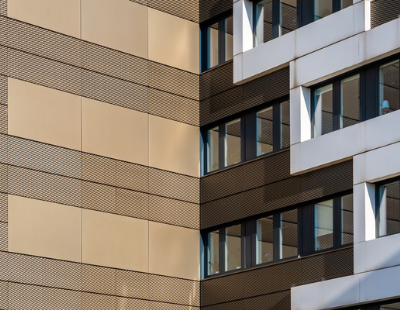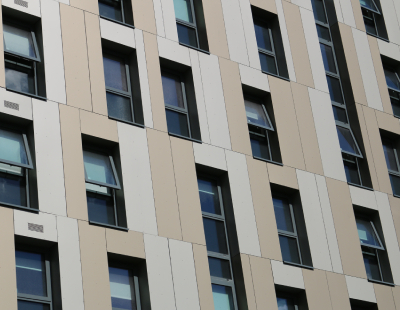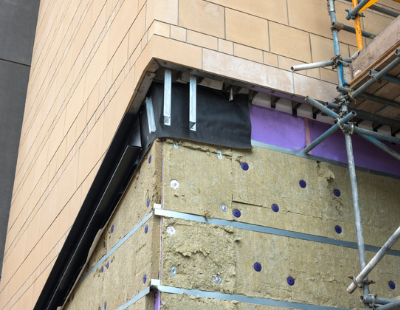“The costs of sorting out the cladding are all subject to VAT at 20% – a charge that the government can easily remove. This would be a significant reduction in the cost that leaseholders must pay for the works.”
Powell says it is time for the government to ‘use some of the powers that Brexit has given’ to resolve problems in the UK.
“Major developers who have shown that they are willing to step up to the mark and undertake the remediation work required on flats they built have been told that they will be required to pay a Developers Tax from 2023,” she adds.
.png)
“Is it in the best interest of the shareholders of these companies (to whom the directors’ report) to continue with the remediation works and pay the Developers Tax? A hard-headed financier could argue that the remediation works, which the companies are not legally required to pay for, should be cancelled, saving the companies millions.”
Powell continues: “If this policy was adopted the misery of the buyers of the flats would be extended – and compounded by increased financial liabilities.”
“The best solution is for the government to make it clear that developers who have completed all remediation works on flats they have built where there is a cladding problem by 2023 will be exempt from this new tax. Leaseholders will be delighted, and developers who have taken their social responsibilities seriously will be rewarded.”
She concludes: “The cladding crisis has already gone on far too long. The government can accelerate the solution – and really encourage developers to sort out the problem, by taking these two simple steps.”
Yesterday, MPs voted down a House of Lord amendment to the fire safety bill which would have protected leaseholders from post-Grenfell repair bills.
In the Commons, MPs voted by 320 votes to 256 to reject a Lords amendment to the fire safety bill that would have shielded leaseholders from the cost of post-Grenfell safety repairs.
Housing Minister Christopher Pincher said that although the Lords amendment had a laudable goal, it was unworkable in reality. The amendment would have protected residents from having to pay the costs of removing unsafe cladding until a statutory support scheme was in place.
Property management firm secures £6.5m in Building Safety Fund
Revolution Property Management has been awarded over £6.5 million in Building Safety Funds to help ensure the safety of those living in high-rise buildings in the Manchester region.
The funding will come as a welcome relief to leaseholders and tenants, as it will lead to the replacement of unsafe aluminium composite material cladding – the same material as the ‘unlawful’ cladding used on Grenfell Tower that was deemed to be the primary cause of the devastating fire – in both private and social sector buildings.
These funds will not only help to directly reduce health and safety risks, but will also ensure that leaseholders are protected from the costs of remediating unsafe cladding where building owners are unable to do so.
Recently, many homeowners have been unable to sell their flats due to their unsafe cladding. Though Manchester shows the strongest UK levels of annual house price growth, with year-on-year price increases of 6.6%, high-rise buildings must meet safety standards for this growth to continue.
Anand Patel, director of block management at Revolution Property Management, comments: “We’re thrilled to have been awarded Building Safety Funds, as the money will enable us to keep buildings and residents safe.”
“It has never been the responsibility of leaseholders to deal with cladding issues themselves, especially when buildings have been signed off by the relevant, responsible authorities at the time of construction.”
He adds: “This crisis has already left millions of families in tall and medium-rise towers in an incredibly tough situation, and we’re glad that the government’s Building Safety Programme is continuing to upscale the support it offers. After all, everyone has the right to feel safe in their own home.”
Accessing build details made easy with new asset management platform
Cadline’s DynamicAIM platform is addressing a major crisis for building and asset owners, providing the ‘golden thread’ required within the construction and housing industry.
The ‘all-in-one’ platform digitises an asset’s build details and contents so property owners can preserve and access vital digital information needed – from measurements and materials, to the type of cladding used and operation manuals for essential fire and safety systems within a building.
Local authorities, housing developers, and manufacturing sites are among the first to adopt DynamicAIM, including associations such as Peabody and Wolverhampton Council.
Asset owners are facing a critical point for building safety as the Royal Institution of Chartered Surveyors (RICS) has revealed new guidance on which types of properties require additional inspections.
This means asset owners need to be prepared to hand over vital information at any time, as outlined in the Hackitt report.
Where build details, drawings, measurements, certifications and manuals would traditionally be produced manually and stored separately, the ability to digitally store and view all details in one platform means asset managers are able to more effectively and safely maintain buildings and facilities.
DynamicAIM is enabling firms to comply with the Building Safety Bill – which is likely to require a digital version of residential buildings above 18 metres.
Matt Lees, head of engineering at Cadline, comments: “It is a building owner’s responsibility to preserve asset information in order to have the means to appropriately maintain the building and its contents.”
“The failings in this regard are well documented throughout the Grenfell Tower fire inquiry and while property managers struggle to search for historical data that is either outdated, inaccurate, or no longer exists.”
He adds: “Now, all asset details from specific measurements right through to large-scale plans can be shared among architects, stakeholders, fire engineers and safety managers in one platform. This has been critical for those addressing immediate safety requirements, and to provide better transparency for stakeholders, tenants and staff.”
Built on Cadline’s existing DynamicMaps functionality, DynamicAIM has been created as one solution to address demand from existing Cadline clients.
The platform handles big data and enables asset owners and managers to view any element of the building virtually, via 3D model or 360 HD virtual tours. It also has the ability to obtain measurements, making future adjustments, repairs or maintenance much easier and quicker to carry out.




.png)





.png)










Join the conversation
Be the first to comment (please use the comment box below)
Please login to comment